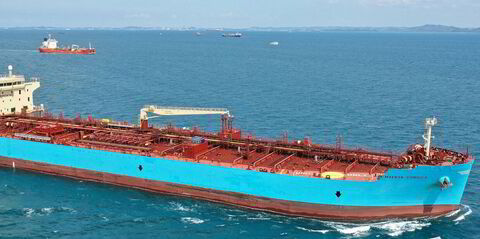Danish Ship Finance (DSF) forecasts a drop in utilisation in 2025, driven by strong fleet growth and the potential normalisation of a “wave of disruptions” that have masked a surplus of supply.
“Nearly all major shipping segments are expected to see fleet utilisation decline, with some facing a rather tough period ahead,” the lender said in a report.
Shipping markets have been boosted by disruptions in the past years but markets may normalise, according to Christopher Rex, head of sustainability and research at the credit institute, and his team.
DSF expects seaborne demand volumes to grow by 1.8% in 2025.
However, the market disruptions are likely to abate, which is expected to reduce travel distances by 0.9%, leading to distance-adjusted demand growth of 0.9% for the year.
The merchant fleet is projected to grow by 3.9%.
“Consequently, supply is expected to outpace demand, which will likely pressure freight rates and vessel prices,” the report said.
The container sector has been most supported by the disruptions in the Red Sea.
“The wave of disruptions has masked the underlying supply surplus in the container segment and kept freight rates and vessel prices at high levels,” it said.
“However, when the situation in the Red Sea normalises, we may see the market flooded with a vast amount of capacity in addition to the usual delivery schedule of the orderbook.”
DSF said tankers are in a comfortable position, but increased scrapping may be needed.
“While fleet growth for the crude tanker segment seems fairly manageable, the product tanker fleet is set to expand ahead of demand, along with the gas carrier fleet. This may require increased demolition of older vessels to balance the market.”
For the dry bulk segment, a weak outlook for China is weighing.
“So far, there has not been any impact on imports while demand has been weakening. Demand for dry bulk vessels could be significantly impacted if weakening demand begins to reduce imports.”
The report also stated that reaching the 2050 targets for carbon emissions will be difficult for the shipping industry.
“The shipping industry is struggling to scale the production of sustainable shipping fuels. However, we believe this approach is misguided. Instead, the industry should prioritise innovating the commercial drivers that influence value creation to effectively reduce fuel consumption.”
DSF said the shipping industry’s green ammonia ambition presents a weak case for decarbonisation.
“The overall energy loss from green electricity to propeller efficiency can exceed 70%. In comparison, many other decarbonisation investments offer significantly better emissions reductions per dollar spent.”
On the other hand, “green hydrogen is expensive and not competitive without a global carbon tax”.
“The climate targets for 2030 are within reach, but achieving net zero by 2050 remains a formidable challenge,” DSF said.






